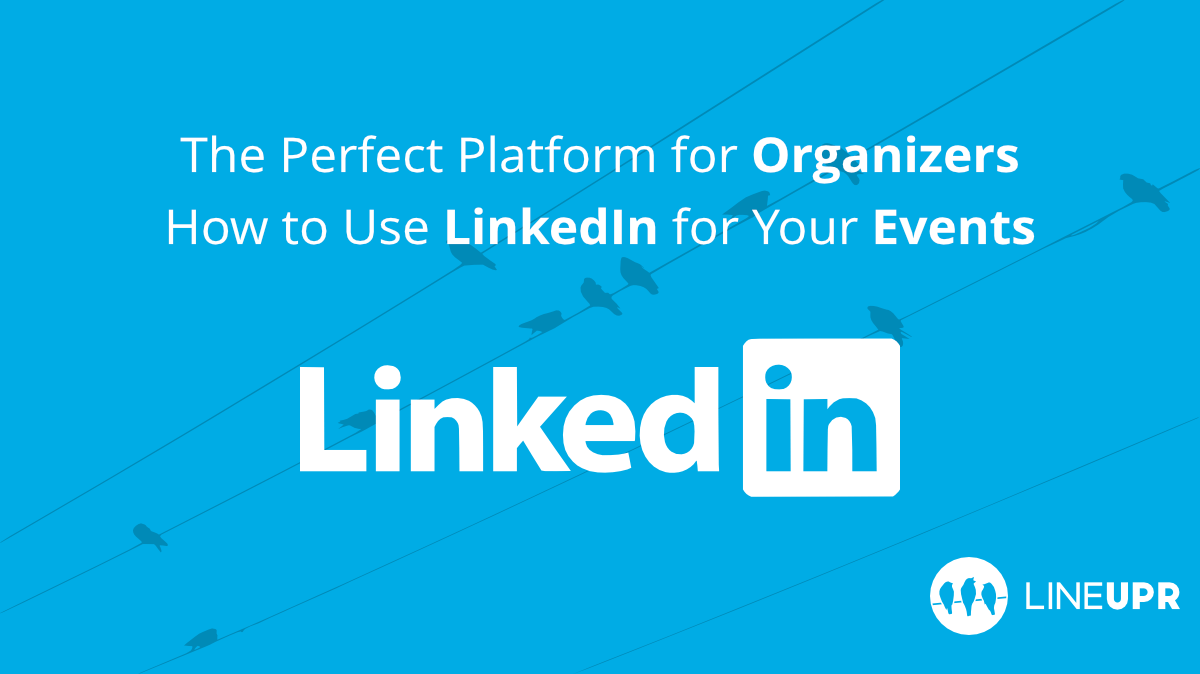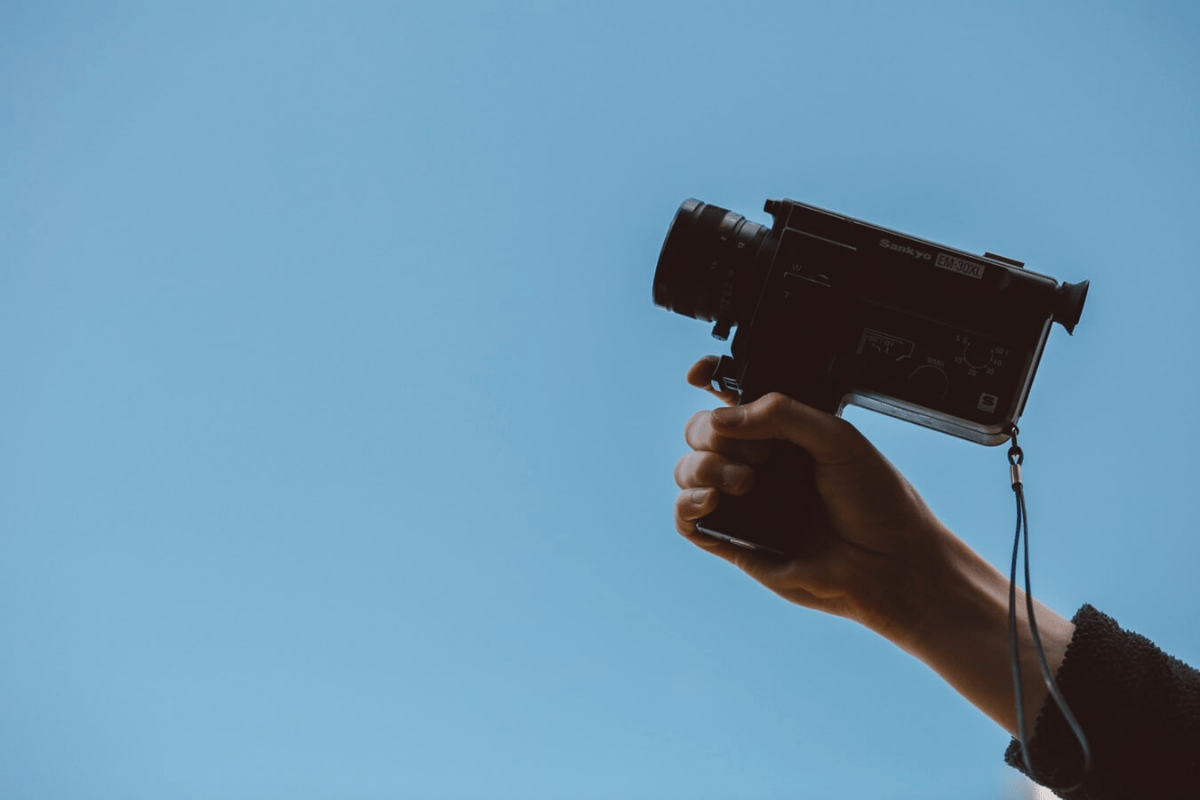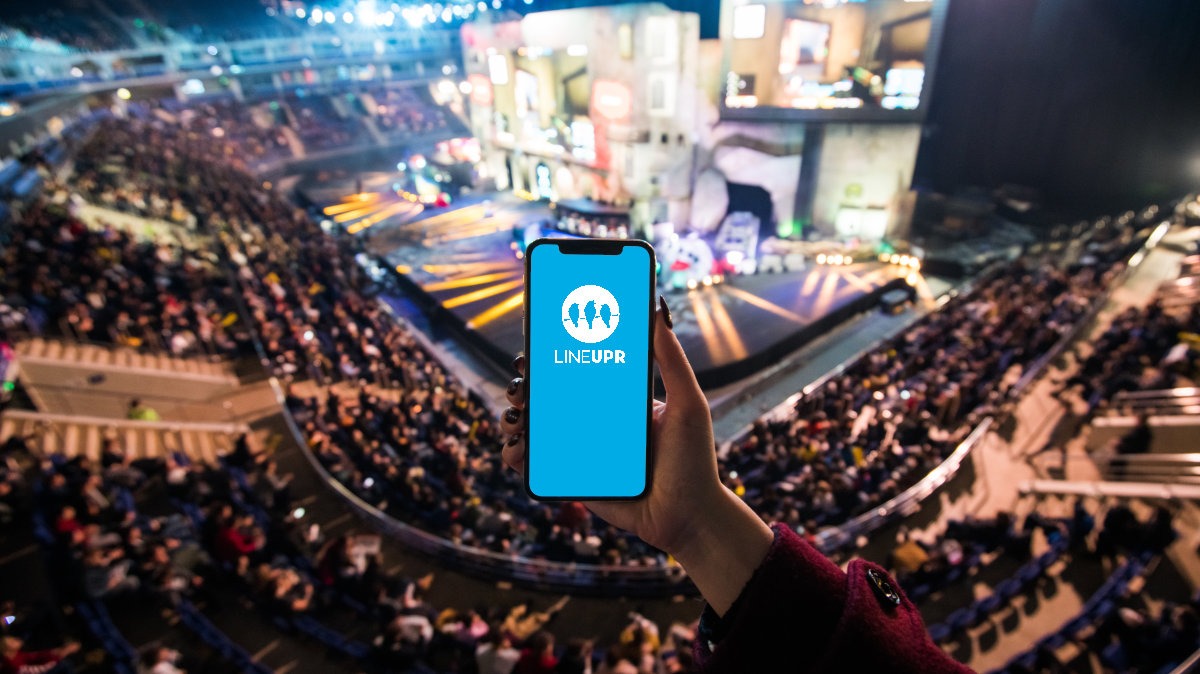Reading time: 7 minutes
LinkedIn is the platform when it comes to networking. With more than 500 million registered users and more than 100 million regular users (at least one login per month), no one in the business world can get past today’s top dog. LinkedIn is not called the Business Facebook for nothing. Initially launched as a digital business card network, LinkedIn has become one of the most important content distributors. This is another reason why it is a great way to market your events.
We’ll show you why LinkedIn is likely to be the perfect fit for your event, which possibilities it offers you for marketing, and how to use it effectively with matching content.
Why LinkedIn Fits Perfectly to Your Events
Why do we use LinkedIn? Exactly, to network with new contacts. Because we’re on the business side of LinkedIn, these contacts are mostly related to our current or future job. And where do you usually meet these contacts? Bingo, at events! That alone should convince you to present your events via LinkedIn. As soon as your event has a certain amount of networking, it perfectly addresses the central LinkedIn target audience.
The next unbeatable advantage of LinkedIn is its members. They are better educated, older, mostly from urban areas and earn significantly more than average. This represents the perfect target group for your events. The willingness to pay for something when it comes to events and self-motivated development is significantly larger for this group of people.
The Perfect Content for LinkedIn
LinkedIn users typically look for jobs, new contacts, expertise, and advice for job applications and professional development. These desires should be kept in mind when choosing your content.
Depending on the nature of your event, you as the organizer have to have an enormous selection of possible contents. Here are five typical ideas that work well on LinkedIn:
Focusing on Networking at Your Event: Which groups of people do you expect? What can be learned from these persons? How is networking done at your event? Are you using matchmaking options?
Job Offers: Are you still looking for employees or volunteers for your event or? Then search directly through LinkedIn and create a job posting here (https://business.linkedin.com/talent-solutions).
Speakers, Partners, and Sponsors: Present interesting contributors and participants of your event. Introduce, present special features or display which added values they contribute to your event.
A Look Behind the Scenes: People are curious. That’s why there are also reality formats. Participants are interested in how you plan your event, how the preparation is done and what happens in the background during the implementation of everything. Here, videos and pictures are particularly suitable.
Your Location: You have certainly thought a lot about the choice of your venue, right? Then share the reasons for your choice of location with your attendees. Why does it fit perfectly to your concept, what can your participants expect, what history does the place have?
LinkedIn Formats
LinkedIn gives you a variety of ways to publish and share your content. You can work with texts, graphics, pictures, and videos. The most successful way is with a good combination of two of these options.
But which formats does LinkedIn concretely offer you to do this? We have put together the top 8:
Business Page: Create your own LinkedIn page for your event (for the company behind the event). Here you can present your event comprehensively and link it to external content such as websites. Pictures can also be integrated here. This is also the perfect place to point out your event website/app or registration page.
Individual LinkedIn Profile: Talk about the event on your profile. You can integrate information into your profile description, create your event as a project in your CV or use an event graphic as your background image. The latter is virtually your advertising space. Besides, you are allowed to have several website links on your profile. Use one of them for your event website.
SlideShare: With SlideShare you can publish a presentation about your event. The general sales pitch for your event works best. You can link this presentation directly to the business page or to your individual LinkedIn profile.
LinkedIn Publishing: Blogging is still a great way to draw attention to yourself and your event. LinkedIn gives you the opportunity to create your articles directly on the platform.
Status Updates: You can post status updates on your business page as well as on your individual profile. When updating statuses you can, for example, post a link or text that will be displayed in the feed of your followers and contacts or in the feed of the people who interact with your updates (more about that in a moment).
LinkedIn InMails: You can send an InMail to most LinkedIn members. In addition to a text, you can of course also send links (we’ll come to the topic of InMail in a moment).
Focus pages: Similar to your business page, LinkedIn offers special focus pages for individual products, brands or even events.
LinkedIn Advertising: There are several ways to advertise on LinkedIn. Here you can work with texts, pictures, and videos (More about ads in the next section).
How to Share Your Content via LinkedIn
Now that we know the most important content formats, all we have to do is find out how we can share these formats as far as possible across our target audience. Here are some successful strategies:
LinkedIn Groups: LinkedIn gives its members the possibility to create groups. Many of these groups are public. As a member, you can quickly and easily join such a group. Most groups follow a clear theme, e. g. Social Media Marketing Experts. Unless otherwise stated in the description of the group, all members are explicitly encouraged to post their own content or other interesting external content. So, look for suitable groups (which deal with the important topics of your target group) and present your event and matching content.
Engagement- Aka Likes, Comments and Shares: As described earlier, your status updates are automatically presented in your followers’ and contacts’ feed. If a person is now interacting with your post, for example, if they leave a like, comment on it, or share it directly, the post is also displayed in the feed of that person’s contacts. Your goal should be to create contributions that lead to engagement. So you can significantly increase your range. Maybe you will create a viral hit.
Ask Actively for Engagement: You probably personally know most of your sponsors, partners, and speakers. Use this access and ask these people to share your posts, like them and leave a few comments. Unfortunately, very few organizers ask for it, although it is a win-win situation for all sides. Finally, everyone is looking forward to more visibility and coverage of their person and content.
Your Content on External Profiles/Business Pages: Similar to the section before, you could also ask your sponsors, partners, and speakers to personally share your posts.
Direct Messages: You can directly interact with your contacts, potential participants or interesting influencers via the message function in LinkedIn. For unfamiliar profiles, you have to send message by message manually. Although this takes a lot of time and work, it can be worthwhile. Unfortunately, you have to keep in mind that LinkedIn allows its members to ban such a “cold” contact. This is also done often. You need to network with these people before you send them messages. With your direct contacts, you can even send a message to up to 50 people at the same time.
Furthermore, LinkedIn, through LinkedIn Advertising, also gives you the power to purchase your reach. The basis for this is information about your target group. Similar to Facebook, you can also specify exactly which groups of people you want to address on LinkedIn. What professional experience do your participants have on average? Which industry do they work in? What are the typical job descriptions? Which language do they prefer? Which country/region do they come from? With this information, you can create your perfect audience and make sure your ad is shown only to those people. LinkedIn offers you several options:
Message Ad: Instead of handpicking interesting members and writing them, you can have LinkedIn do the work for you. Create one or more templates for direct messages and let them automatically be sent to your target group. With A/B Testing, LinkedIn can find out for you which message is opened and clicked on the most. Yes, you can also use direct links in the message, e. g. to integrate your event. The price per message varies with your target audience. Of course, emails to CEOs are more expensive than to interns. We recommend a good mix of interesting groups of people. In companies, there are always few decision makers, but many people who work on information and ideas. Often it is more efficient to address these people.
Text Ad: If you’re on LinkedIn, you’ll regularly see unobtrusive advertisements on your newsfeed or on the right side. Only a very limited space is available here for your message. This form of advertising is therefore relatively cheap. Here you should come straight to the point. This area is also well suited for an unobtrusive reminder.
Image Ad: We have selected the “Single Image Ad” as an example. You can also work here with a carousel function and several alternating pictures and videos. It is crucial that these types of ads appear directly in your target group’s newsfeed. Here, you can generate enough attention for your event. This is the most potent marketing caliber that you can find on LinkedIn. Therefore, these ads are also a bit more expensive.
What You Should Have Learned
LinkedIn is great for marketing your event and to draw the attention of potential visitors. You should at least create a business page for your event and mention and link your event to your personal profile. Status updates and direct messages to potential participants are another great way to talk about your event. In addition, there are many successful tools on LinkedIn to promote your content for free or to share it through paid packages. All in all, LinkedIn should be mandatory for every organizer.






